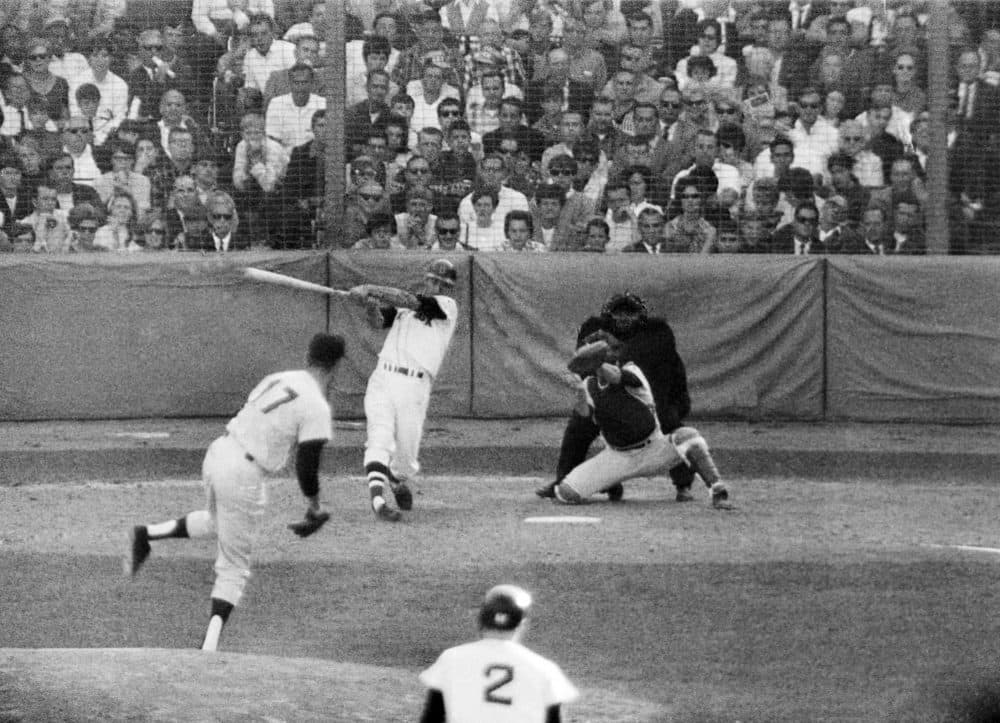Advertisement
For Red Sox Nation, 1967 Was The 'Spark That Started The Fire'

1967 was the summer of the Red Sox in Boston.
Pitcher Jim Lonborg was a star on the mound for the Sox that summer and fall. He believes he saw the entire country falling in love with the up-and-down franchise of ours — in other words, the birth of Red Sox Nation.
"Where was the spark that started that fire that rages through Red Sox Nation now, that passion that’s out there?" Lonborg asks. "I would have to say that the ’67 Red Sox were that spark that started the fire."
A late July rally against the California Angels that summer may have been the first spark. For once, the Sox looked good enough to go all the way, and the next day, a Boston Globe headline asked the musical question: "Impossible Dream?"
And suddenly, the team had a theme: the "Man of La Mancha's" sweet ode to beating the odds:
It was a real change of tune for the Sox.
"Up until that point, that team was literally dead in the water," remembers retired Boston Globe sports photographer Frank O'Brien, who covered the Red Sox for over 40 years.
"You’d go there -- and I did often -- and there’d be nobody in the ballpark," he says. "You know, you’d get into the bleachers for a buck or whatever it was. The last draw they had was Ted [Williams], and when he retired, they had nothing going for them."
In fact, the record shows that at the Sox home opener that year -- seven years after the retirement of slugger Williams — only about 8,000 showed up.
Sox management even considered moving the team out of town. Boston University historian Tom Whalen writes about it in his new book, "Spirit Of '67."
"Because no one was going to the games, Tom Yawkey, the owner, was hemorrhaging money and ... they wanted to perhaps bring it to Milwaukee," Whalen says. "Think of Boston without the Red Sox. It’s almost inconceivable now, but there was a real possibility back in 1967, at least at the beginning."
Advertisement

Then the Sox started winning under hard-nosed new manager Dick Williams, with Lonborg, Carl Yastrzemski and plenty of diverse new talent in the dugout.
"The Red Sox began to resemble what America really looked like," Whalen says. "It had one of the most diverse rosters in the major leagues by 1967, and this is significant because the Red Sox had been pretty much a lily-white team up to the early 1960s."
They clinched the pennant Oct. 1, then took an overpowering St. Louis Cardinals team seven games before losing the World Series at home. That hurt!
But Lonborg wonders now, was losing all that bad?
"Or would it have been different had we won and would it have been as special?" he says. "I like to defer to the more romantic notion that we had one more step, one more chapter to write."
Making it an endless dream.
This segment aired on October 5, 2017.
